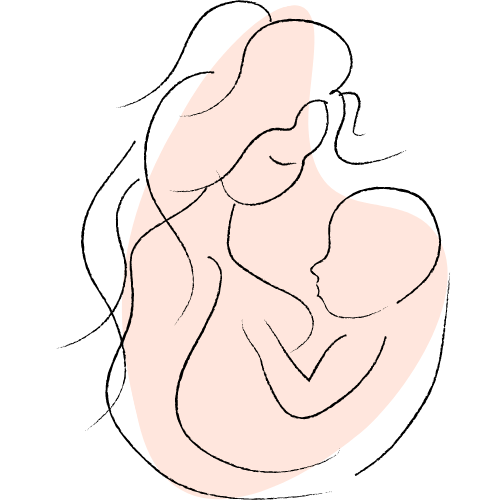any mothers who have given birth by caesarean section wonder how it can affect breastfeeding. We give you all the answers in this article.
When you have had a caesarean, is breastfeeding more difficult to set up? This is a question often asked by new mothers who gave birth by cesarean.
Generally, having a caesarean shouldn’t be a problem for breastfeeding. The mother’s body is intelligent: it understands that, as soon as the placenta is expelled, the baby will no longer be fed by the uterus and that it is necessary to feed it otherwise. Therefore, the type of birth you have should not interfere with breastfeeding. However, some procedures in the hospital can cause problems if you want to breastfeed, especially if the mother and baby are separated after giving birth.
If the caesarean has been performed under epidural anesthesia, the first feeding can take place on the hospital bed. If it is general anesthesia, the mother can breastfeed when she wakes up and when she feels ready.
However, after a cesarean, the mom needs a little more help. Especially during the first hours and days after the procedure: she must have a person (spouse, family member, or nurse) to help her take the baby, hold it, and put it on the breast.
7 Tips for Breastfeeding Success After a C-Section
It may be more difficult, but you can definitely breastfeed after a cesarean section. Here are seven tips for success.
- Start breastfeeding as soon as possible after your c-section surgery. If you have epidural or spinal anesthesia, you’ll be awake so you may be able to breastfeed right away. However, if it’s necessary to have general anesthesia, your recovery will take longer. If you can’t breastfeed right away, ask to hold your baby skin-to-skin. Then, put the baby to the breast as soon as you safely can.
- Get help positioning your baby. Not only will you have an abdominal incision to protect, but you’ll have to deal with an IV line and maybe even a blood pressure cuff, too. Since the nurses and the hospital lactation consultant work with mothers who’ve had sections all the time, they can show you comfortable hold you may not have known about.
- Breastfeed very frequently, at least every one to three hours. Even though you may be exhausted and in pain, you’re more likely to be successful if you breastfeed early and often.
- Keep your baby with you as much as possible. You will not be able to get up to take care of your child on your own right away, but if you have your partner, a friend, or relative stay with you, you should be able to keep your baby in your room.
- Use a breast pump if you can’t be with your baby. Pump every two to three hours to stimulate the production of breast milk.
- Don’t be afraid to take your pain medication. You will be more comfortable to breastfeed. It may also help you relax so your body can concentrate on healing and begin making breast milk.
- Take advantage of the extra time in the hospital. You will be spending a little more time in the hospital compared to someone who had a vaginal delivery. While you need this time to rest and begin healing, a longer hospital stay also allows you more time with the hospital staff and the lactation consultant. Use this time to ask questions and learn all you can about breastfeeding your child so that you will feel more comfortable and confident when you get home.
